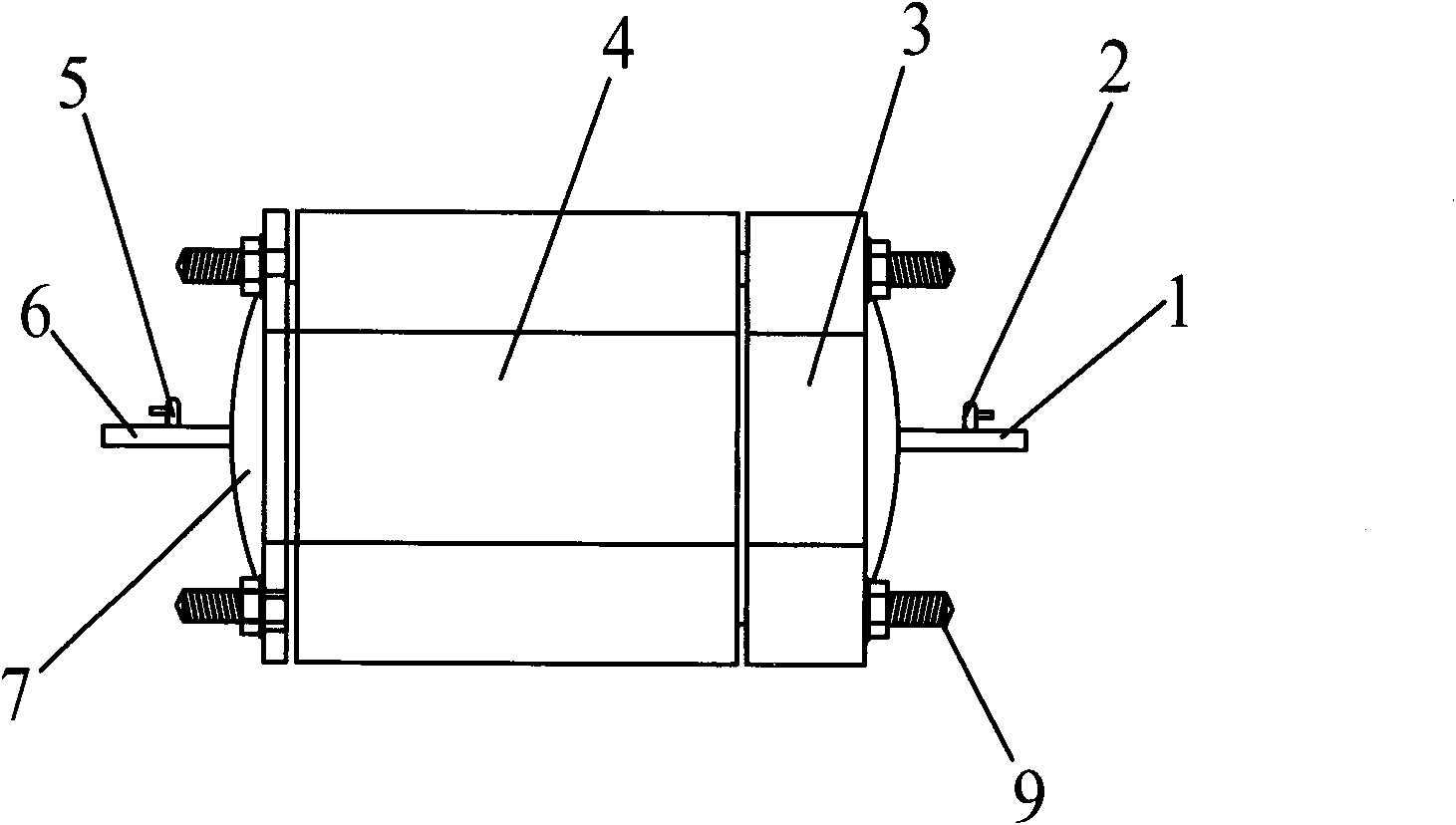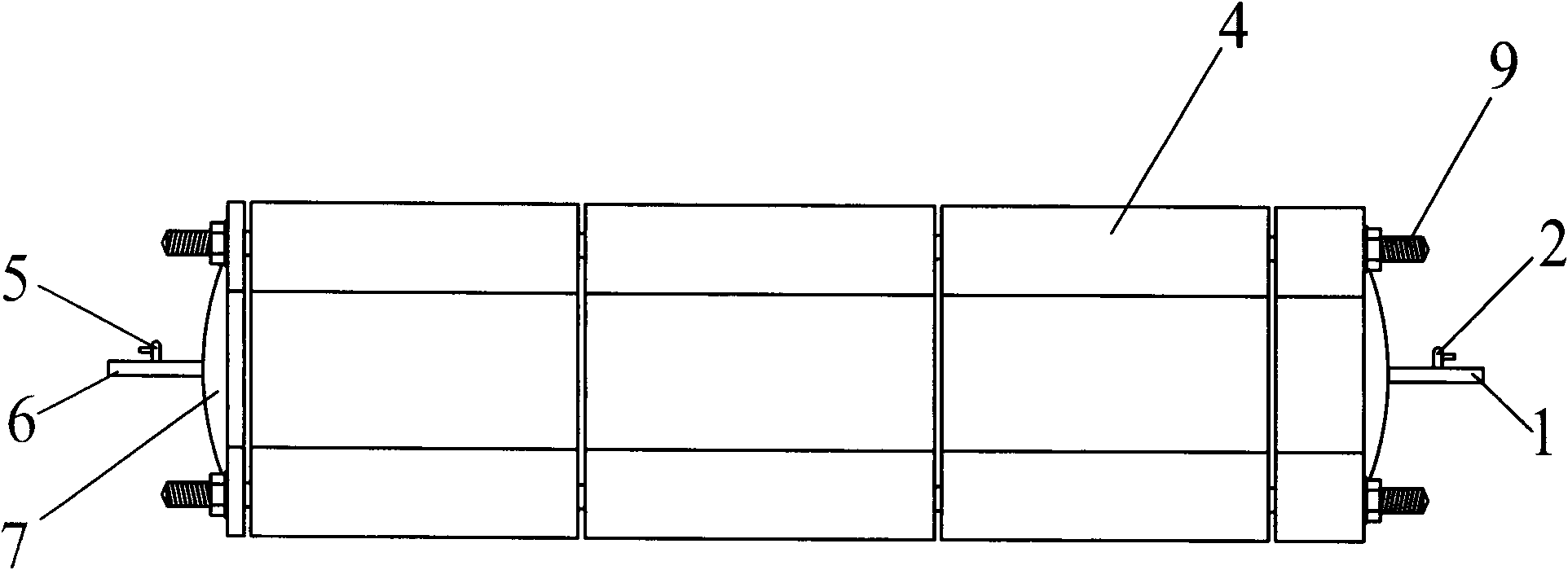Device for concentrating and separating colloid in underground water
A separation device and groundwater technology, applied in water/sewage treatment, water/sludge/sewage treatment, chemical instruments and methods, etc., can solve the problems of poor treatment effect, unsatisfactory treatment effect and low selectivity, etc. Achieve the effects of easy promotion, large-scale promotion and application, and high economic value
- Summary
- Abstract
- Description
- Claims
- Application Information
AI Technical Summary
Problems solved by technology
Method used
Image
Examples
Embodiment 1
[0053] Such as figure 1 and figure 2 A kind of device that concentrates and separates the colloid in groundwater shown, comprises left end sealing cover 7, right end sealing cover 3 and is positioned at the separating device between left end sealing cover 7 and right end sealing cover 3, described left end sealing cover 7, separating device and The right-end sealing cover 3 is sequentially connected by a fastening screw 9, the side of the right-end sealing cover 3 away from the separation device is provided with a liquid inlet 1, and the side of the left-end sealing cover 7 far away from the separation device is provided with a liquid discharge port 6. A sealing ring 10 is arranged between the right sealing cover 3 and the separation device, and a filter membrane 11 is arranged on the side of the sealing ring 10 close to the right sealing cover 3, and the left sealing cover 7 and the separating device A sealing ring two 12 is arranged between the devices, and a filter membra...
Embodiment 2
[0057] Such as Figure 5 A kind of device that concentrates and separates the colloid in groundwater shown, comprises left end sealing cover 7, right end sealing cover 3 and is positioned at the separating device between left end sealing cover 7 and right end sealing cover 3, described left end sealing cover 7, separating device and The right-end sealing cover 3 is sequentially connected by a fastening screw 9, the side of the right-end sealing cover 3 away from the separation device is provided with a liquid inlet 1, and the side of the left-end sealing cover 7 far away from the separation device is provided with a liquid discharge port 6. A sealing ring 10 is arranged between the right sealing cover 3 and the separation device, and a filter membrane 11 is arranged on the side of the sealing ring 10 close to the right sealing cover 3, and the left sealing cover 7 and the separating device A sealing ring two 12 is arranged between the devices, and a filter membrane two 13 is a...
Embodiment 3
[0062] Such as image 3 and Figure 4 A kind of device that concentrates and separates the colloid in groundwater shown, comprises left end sealing cover 7, right end sealing cover 3 and is positioned at the separating device between left end sealing cover 7 and right end sealing cover 3, described left end sealing cover 7, separating device and The right-end sealing cover 3 is sequentially connected by a fastening screw 9, the side of the right-end sealing cover 3 away from the separation device is provided with a liquid inlet 1, and the side of the left-end sealing cover 7 far away from the separation device is provided with a liquid discharge port 6. A sealing ring 10 is arranged between the right sealing cover 3 and the separation device, and a filter membrane 11 is arranged on the side of the sealing ring 10 close to the right sealing cover 3, and the left sealing cover 7 and the separating device A sealing ring two 12 is arranged between the devices, and a filter membra...
PUM
| Property | Measurement | Unit |
|---|---|---|
| particle diameter | aaaaa | aaaaa |
Abstract
Description
Claims
Application Information
 Login to View More
Login to View More - R&D
- Intellectual Property
- Life Sciences
- Materials
- Tech Scout
- Unparalleled Data Quality
- Higher Quality Content
- 60% Fewer Hallucinations
Browse by: Latest US Patents, China's latest patents, Technical Efficacy Thesaurus, Application Domain, Technology Topic, Popular Technical Reports.
© 2025 PatSnap. All rights reserved.Legal|Privacy policy|Modern Slavery Act Transparency Statement|Sitemap|About US| Contact US: help@patsnap.com



